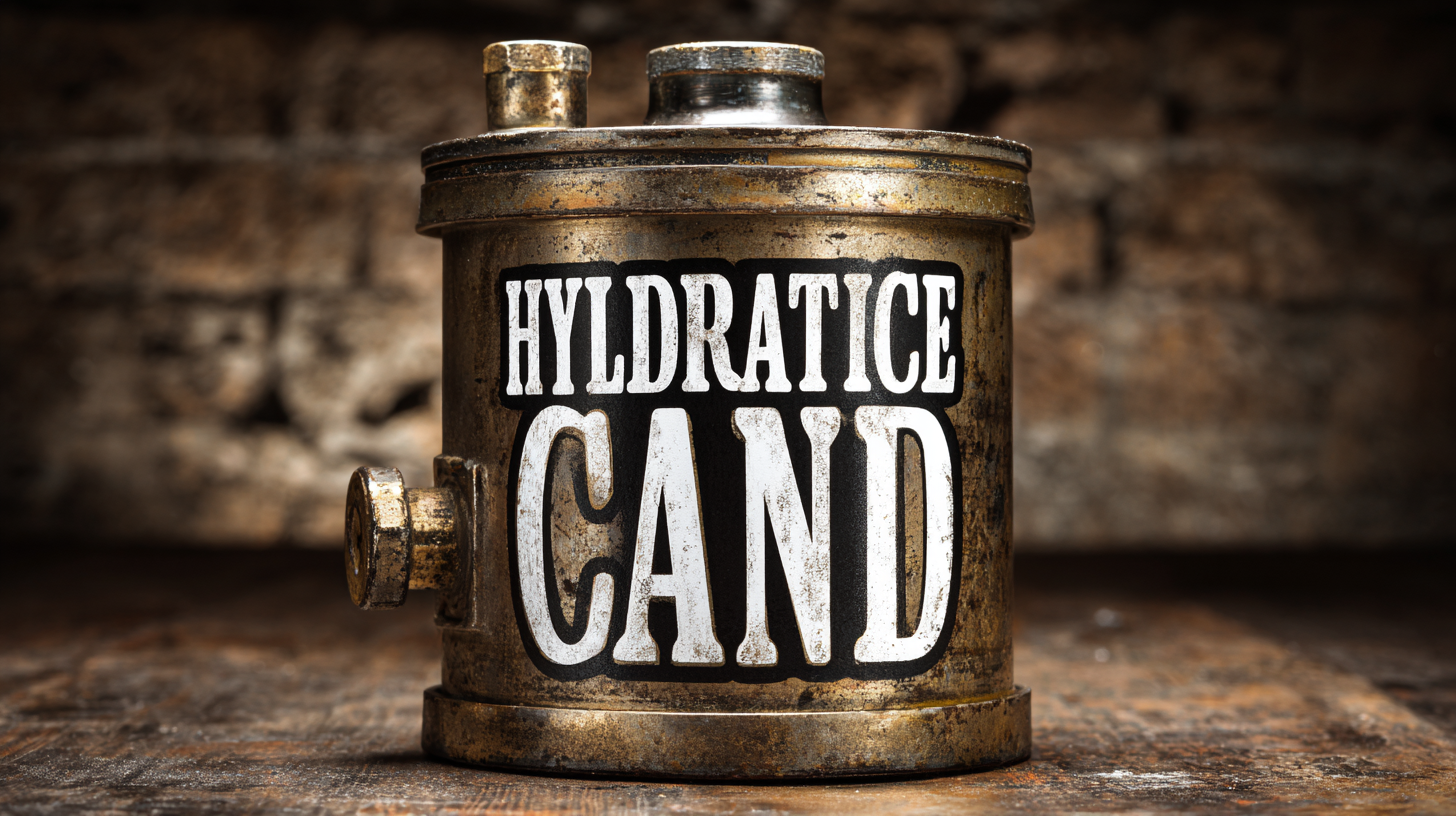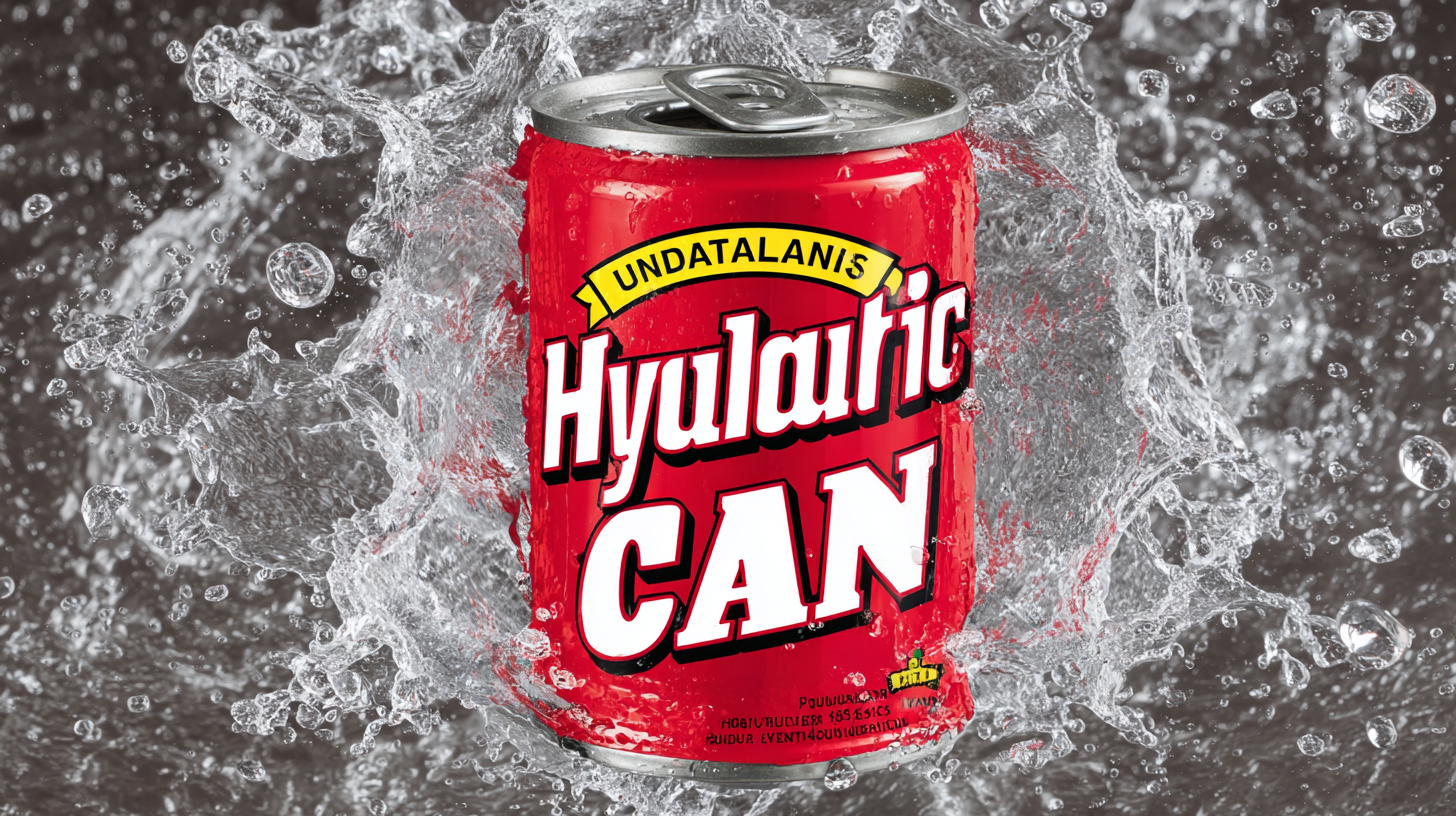When it comes to working with heavy machinery or performing automotive repairs, a reliable hydraulic can is an essential tool in any toolkit. According to a report by the International Hydraulic and Pneumatic Association, the global hydraulic tools market is projected to reach $12.2 billion by 2026, demonstrating the increasing reliance on hydraulic systems across various industries. However, choosing the right hydraulic can can be overwhelming due to the myriad of options available, each with distinct features tailored to specific tasks. In this ultimate guide, we will address common problems associated with different types of hydraulic cans, from compatibility issues to performance limitations, equipping you with the knowledge needed to make an informed decision that meets your unique needs. The right hydraulic can not only enhances efficiency but also ensures safety and durability, making it imperative to understand the key factors influencing your choice.

When it comes to understanding hydraulic cans, it's essential to recognize the various types and applications that fit different needs. Hydraulic cans are crucial in a variety of industries, whether lifting heavy machinery or assisting in auto repairs. With the global hydraulic cylinder market expected to grow from USD 14.3 billion in 2021 to USD 18.3 billion by 2027, the versatility and importance of hydraulic systems are evident.
When choosing a hydraulic can, consider the weight capacity required for your specific tasks. Ensuring that the can supports your load is vital for both safety and efficiency. Additionally, evaluate the height range that the can can achieve, as this will determine its suitability for different applications.
Tip: Always inspect the hydraulic can for signs of wear or leaks before use. Regular maintenance will ensure longevity and performance. Furthermore, if you’re frequently moving or transporting the hydraulic can, look for models designed with portability in mind to make the job easier.
When selecting the best hydraulic can for your needs, it’s essential to consider several key factors that can significantly influence usability and efficiency. One of the primary factors is the weight capacity of the hydraulic can. Ensure it’s suitable for the intended tasks, whether it’s lifting heavy machinery or assisting in automotive repairs. Choosing a hydraulic can with the right weight capacity will not only enhance safety but also improve overall performance.
 Another crucial aspect to contemplate is the design and portability of the hydraulic can. If you plan on moving it frequently, opting for a lightweight, compact model with ergonomic handles can save you time and effort. Additionally, features such as easy-to-read gauges and a quick-connect mechanism can greatly enhance user experience and convenience on the job.
Another crucial aspect to contemplate is the design and portability of the hydraulic can. If you plan on moving it frequently, opting for a lightweight, compact model with ergonomic handles can save you time and effort. Additionally, features such as easy-to-read gauges and a quick-connect mechanism can greatly enhance user experience and convenience on the job.
Tip: Always check for certifications and compliance with safety standards. A certified hydraulic can is more likely to meet necessary performance benchmarks and provide peace of mind during operation.
Tip: Don’t forget to consider the durability of the hydraulic can. Look for models made from high-quality materials that can withstand wear and tear, especially if you plan to use it in demanding environments.
When selecting a hydraulic can, understanding capacity and load ratings is crucial to ensure safety and efficiency in heavy lifting tasks.
Typically, hydraulic cans are rated by their lifting capacity, which can range from as low as 1 ton to over 100 tons, depending on the model and manufacturer. According to a report by the American Society of Mechanical Engineers (ASME), it is recommended to select a hydraulic can that exceeds the maximum load you intend to lift by at least 20-25% to accommodate potential overloads or shifting weights during operation.
Load ratings not only reflect the can's lifting ability but also its stability and durability under pressure. For example, a hydraulic can with a load rating of 10 tons should be capable of lifting weights with minimal deflection and without compromising safety. The National Institute for Occupational Safety and Health (NIOSH) advises that users pay close attention to the hydraulic oils and materials used, as these factors significantly impact the can's performance under load. Therefore, it’s essential to examine the manufacturer’s specifications and confirm that the hydraulic can is suited for both the intended capacity and operational demands of your projects.
When selecting a hydraulic can, there are several critical features to consider that can significantly impact performance and safety. Quality hydraulic cans should have a robust construction, typically made from high-strength steel or heavy-duty plastic, to ensure they can withstand high pressures without leaking or bursting. According to a recent industry report by Grand View Research, the hydraulic tool market is projected to grow significantly over the next few years, emphasizing the importance of reliability in hydraulic equipment.
Another essential feature is the lifting capacity of the hydraulic can. Most quality models offer a range of capacities, often from 2 to 20 tons, catering to various automotive and industrial applications. It's advisable to assess the maximum weight you will be lifting and choose a model that exceeds this capacity for safety. Additionally, ease of use, including ergonomically designed handles and simple operation mechanisms, can greatly enhance your efficiency and effectiveness during heavy lifting tasks.
Tip: Always check for safety features such as overload protection and pressure relief valves, as these can prevent potential hazards during operation. Moreover, consider models with a wide base to ensure stability while lifting heavy loads. A reliable warranty can also serve as an indicator of quality, providing peace of mind in your investment.
When using hydraulic cans, safety should always be your top priority. These powerful tools can lift heavy objects with ease, but improper handling can lead to severe injuries or accidents. Always begin by inspecting your hydraulic can for any signs of wear or damage. Ensure that the seals are intact and that the hydraulic fluid is at an appropriate level. A faulty can can result in unexpected failures while in use.
